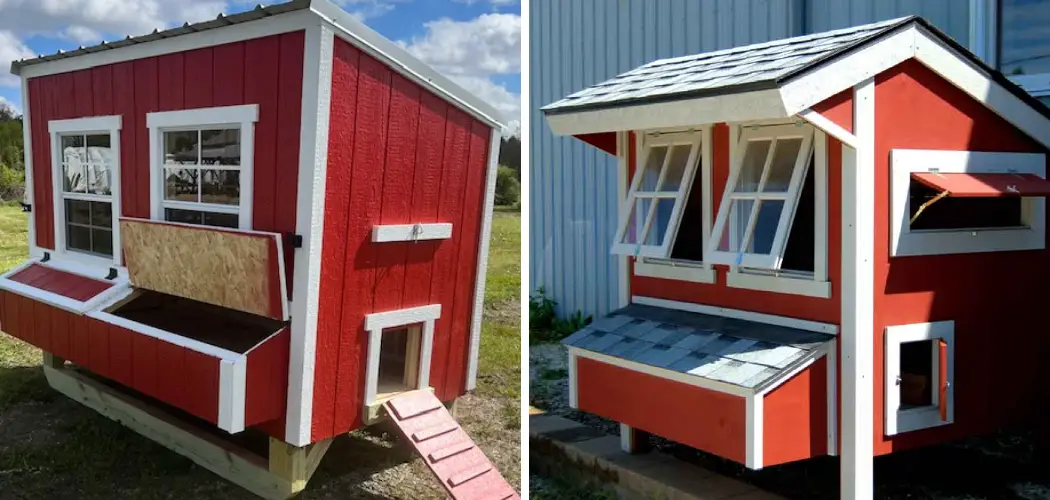Keeping your chickens happy and healthy is a top priority for any chicken owner. One key aspect of this is proper ventilation in their coop. Just like humans, chickens need fresh air to thrive. Ventilation not only improves the air quality inside the coop but also helps regulate temperature and humidity levels.
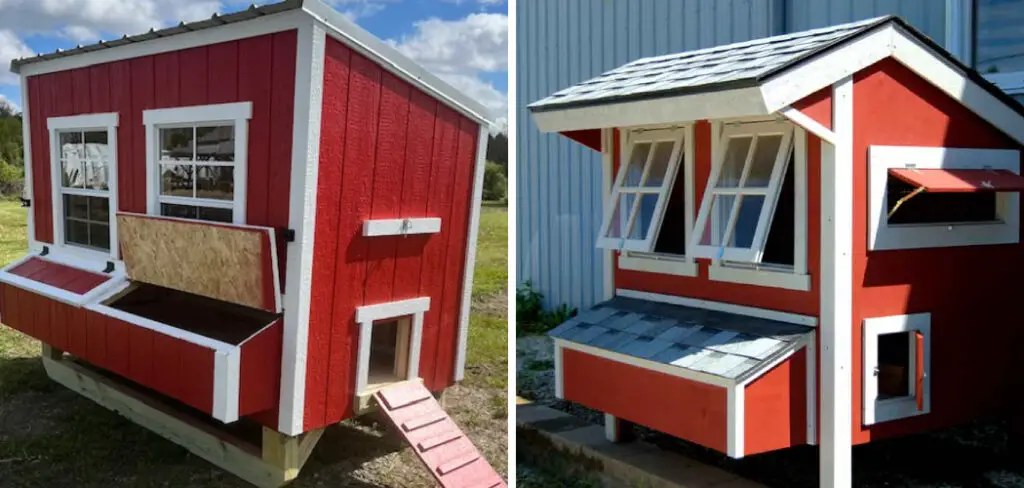
In this guide, we will discuss why ventilation is important for your chicken coop and how to ventilate a chicken coop and ensure your feathered friends stay happy and healthy.
Why Ventilation is Important for Your Chicken Coop?
Proper ventilation in a chicken coop is vital for the health and well-being of your chickens. Chickens produce a significant amount of moisture through their droppings, breathing, and eggs. If this moisture is not adequately ventilated out of the coop, it can lead to a buildup of harmful bacteria and fungi. These conditions can cause respiratory issues, eye infections, and other health problems for your chickens.
In addition, poor ventilation can also result in excessively high temperatures inside the coop during hot summer months. This can cause heat stress in chickens, which can be fatal.
Not only does proper ventilation improve air quality and regulate temperature, but it also helps remove unpleasant odors from the coop. This not only keeps your chickens comfortable but also makes for a more pleasant experience for chicken owners.
11 Best Ways on How to Ventilate a Chicken Coop
1. Install Windows:
One of the simplest and most effective ways to ventilate a chicken coop is by installing windows. Windows allow for natural airflow and can be opened or closed depending on weather conditions. Make sure to install windows on opposite sides of the coop to create a cross breeze. Installing mesh screens over the windows can also help keep out insects and predators.
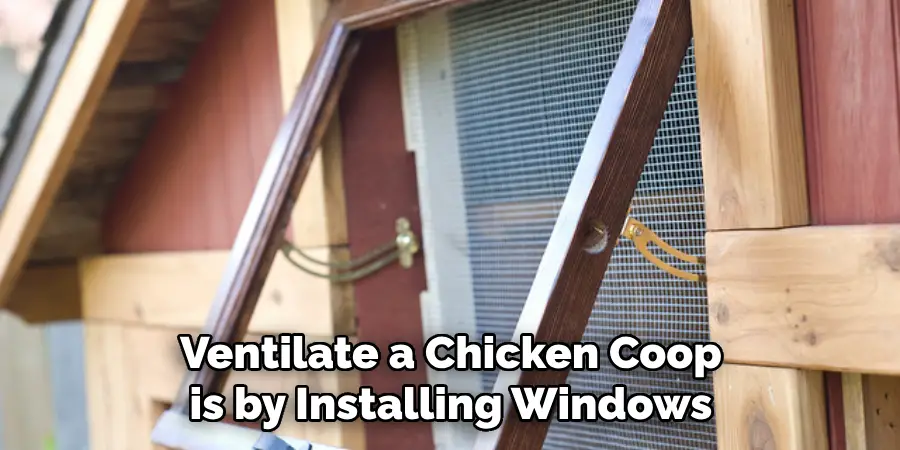
2. Add Vents:
In addition to windows, vents can also be added to a chicken coop for proper ventilation. Vents are typically installed near the roof of the coop to allow hot air to escape and fresh air to enter. There are various types of vents available, including box vents, ridge vents, and gable vents. Adding vents can greatly improve air circulation inside the coop. This is especially important during colder months when windows may need to be kept closed.
3. Use a Ventilation Fan:
For those in hotter climates or with larger coops, a ventilation fan can be beneficial. These fans help circulate air and can also help remove excess moisture from the coop. They are typically installed near the roof of the coop and can be operated manually or set on a timer. Using a fan can also help regulate temperature and prevent heat stress in chickens. This can be especially important during the summer months.
4. Install a Poultry House Ventilation System:
For larger coops or commercial chicken farming operations, a poultry house ventilation system may be necessary. These systems are designed to remove excess moisture, ammonia, and other harmful gases from the coop. They typically use multiple fans and vents to ensure proper air circulation and can also be equipped with heaters for colder months. If you have a large coop or numerous chickens, investing in a poultry house ventilation system may be worth considering.
5. Utilize Eaves:
Eaves are the overhanging edges of a roof that can help provide natural ventilation for a chicken coop. Installing eaves on your coop allows hot air to escape through the top while cool air enters through the bottom, creating natural air circulation. This is a low-cost option for ventilation and can be especially beneficial during warmer months.
6. Use Roosts:
Chickens naturally roost at night, and this can also help improve ventilation in the coop. When chickens roost, they lift their feathers, allowing fresh air to circulate to them. Make sure to provide enough space for all your chickens to comfortably roost, and regularly clean and rotate the roosts to prevent overcrowding. Using roosts can be an easy and natural way to improve ventilation in your chicken coop.
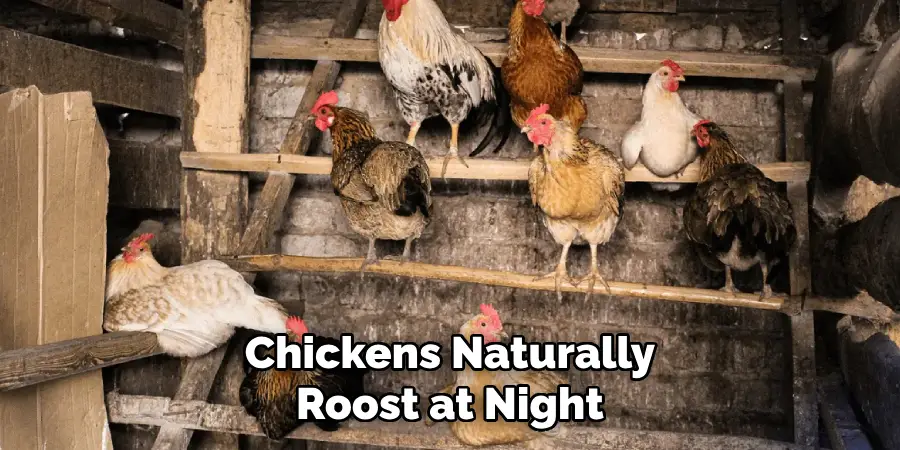
7. Keep the Coop Clean:
Regularly cleaning out the coop is essential for proper ventilation. Removing old bedding, droppings, and other debris prevents the buildup of harmful bacteria and fungi that can affect air quality. A clean coop also allows for better airflow and helps prevent unpleasant odors. This should be done every week, with a more thorough cleaning every few months. If your coop smells unpleasant, it’s a sign that ventilation may not be adequate.
8. Provide Adequate Space:
Overcrowding in a chicken coop can lead to poor air quality and health issues for chickens. Make sure to provide enough space for your chickens to move around freely and comfortably. A general rule is to allow at least four square feet of space per chicken inside the coop and ten square feet per chicken in an outdoor run. This not only improves ventilation but also helps prevent stress and aggression among chickens.
9. Use Wire Mesh Flooring:
In addition to proper space, using wire mesh flooring in the coop can also help with ventilation. This type of flooring allows droppings and moisture to easily fall through, keeping the floor dry and reducing ammonia levels. It also helps improve air circulation and makes cleaning the coop easier. However, make sure to provide a solid surface for chickens to stand on when roosting to prevent foot injuries.
10. Avoid Using Artificial Materials:
When constructing or renovating a chicken coop, it’s best to avoid using artificial materials such as vinyl and plastic. These materials can trap moisture and heat inside the coop, leading to poor ventilation. Instead, opt for natural materials such as wood and metal that allow for better air circulation. If using artificial materials, make sure to add ventilation options such as windows and vents.
11. Monitor Temperature & Humidity:
Lastly, it’s important to regularly monitor the temperature and humidity levels inside your chicken coop. Ideal temperatures for chickens range from 50-75 degrees Fahrenheit, with humidity levels between 40-70%.
If you notice that either of these levels is consistently too high or too low, it may be a sign that your coop needs better ventilation. Regularly checking these levels can help ensure the health and comfort of your chickens.

Following these 11 best ways how to ventilate a chicken coop can greatly improve the overall living conditions for your chickens. Proper ventilation not only promotes better air quality but also helps regulate temperature, prevent moisture buildup, and reduce health risks for your feathered friends.
With the right combination of natural and artificial ventilation options, you can create a comfortable and healthy environment for your chickens to thrive. So, it is important to regularly monitor and maintain proper ventilation in your chicken coop to ensure the well-being of your flock. Happy chicken keeping!
Additional Tips and Tricks to Ventilate a Chicken Coop
- If your chicken coop is located in a hot and humid climate, consider adding additional ventilation options such as fans or misters to help cool down the air inside.
- Keep an eye on the weather forecast and adjust your ventilation accordingly. If there’s heavy rain or strong winds expected, you may want to close off some of the vents to prevent water or debris from getting inside.
- Regularly check and clean your ventilation system to ensure it is functioning properly. Remove any debris or blockages that may have accumulated over time.
- Consider adding wire mesh to the openings of your vents to prevent larger predators from entering while still allowing for proper airflow.
- If you notice condensation forming inside your coop, it may be a sign that you need to increase ventilation or add a dehumidifier to prevent mold and mildew growth.
- Keep an eye out for any signs of respiratory issues in your chickens, as poor ventilation can lead to health problems for your flock.
- Consult with local chicken farmers or experts for advice on the best ventilation practices for your specific climate and coop design.
- Remember to always prioritize the health and comfort of your chickens when making decisions about ventilation. Ventilation is crucial for maintaining good air quality and preventing heat stress, which can be fatal for chickens.
- In addition to proper ventilation, ensure that your coop has adequate shade and access to fresh water for your chickens to stay cool during hot weather.
- If you have a larger coop with multiple sections or levels, consider adding separate ventilation options for each area to ensure proper airflow throughout the entire space.
- Don’t be afraid to experiment with different ventilation methods and placements to find what works best for your specific coop and climate.
- Regularly monitor the temperature and humidity levels inside your coop to ensure they are within a safe range for your chickens. Adjust ventilation accordingly if necessary.
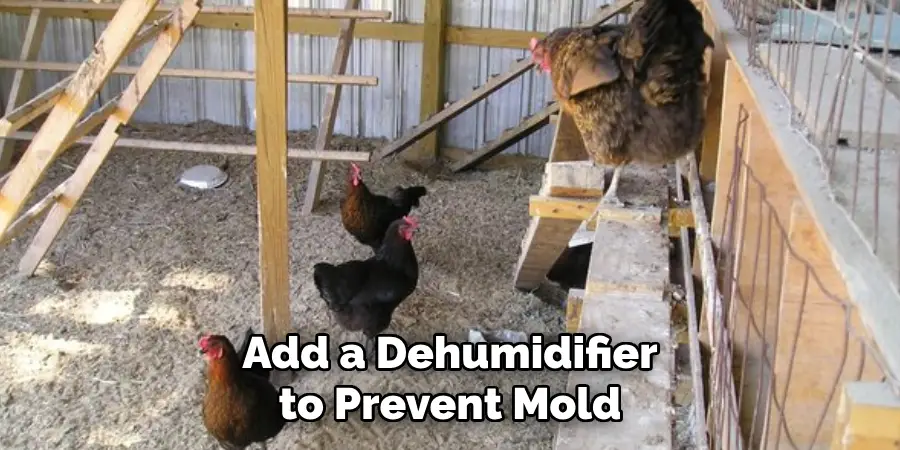
By following these additional tips and tricks, you can ensure that your chicken coop has proper ventilation to keep your flock healthy and comfortable all year round.
So, it is important to regularly check and maintain your chicken coop’s ventilation system to provide the best living environment for your chickens. With proper ventilation, your chickens will be able to thrive and produce healthy eggs for you and your family. Happy ventilating!
Things You Should Consider to Ventilate a Chicken Coop
1. The first thing to consider when ventilating a chicken coop is the size of the coop. A coop that is too small will not provide enough space for proper ventilation. On the other hand, a coop that is too large may create drafts and make it difficult for chickens to maintain their body heat.
2. The location of the coop also plays an important role in ventilation. It’s best to place the coop in an area with good air circulation and natural ventilation. Avoid placing it in low-lying areas where cold, damp air can settle.
3. The type of bedding used in the coop can affect ventilation as well. It’s important to use materials that allow for proper airflow, such as pine shavings or straws. Avoid using materials that are too dense and can trap moisture.
4. Another factor to consider is the number of chickens in the coop. Overcrowding can lead to poor air quality and increase the risk of respiratory illnesses among birds. It’s recommended to have at least 4 square feet of space per chicken in the coop.
5. The design of the coop also plays a crucial role in ventilation. The coop should have windows or vents that can be opened and closed to regulate airflow. Additionally, the coop should be designed in a way that prevents drafts and provides proper insulation.
6. Regular maintenance of the coop is essential for good ventilation. This includes cleaning out old bedding, removing any obstructions from vents or windows, and keeping the coop free of dust and debris.
7. In colder climates, it’s important to have adequate insulation in the coop to keep chickens warm and prevent drafts. This can be achieved by using materials such as foam boards or straw bales.
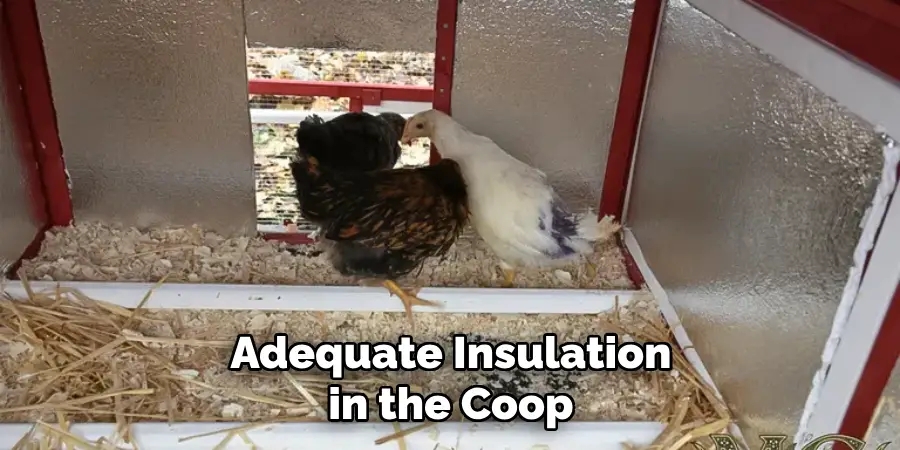
8. In hotter climates, proper ventilation is crucial to prevent heat stress in chickens. Adding shade structures and fans can help circulate air and keep the coop cool.
9. It’s also important to consider the direction of prevailing winds when designing ventilation for a chicken coop. Placing windows or vents on opposite sides of the coop can help create cross-ventilation and improve airflow.
10. Lastly, it’s important to monitor the temperature and humidity levels in the coop regularly. High levels of humidity can lead to mold growth and respiratory problems for chickens, while low humidity can cause dry air and discomfort for the birds. Finding a balance is key to maintaining good air quality in the coop.
In addition to these factors, it’s also important to consider the season and weather conditions when ventilating a chicken coop. During colder months, extra insulation may be needed, while during hot summer days, additional shading and ventilation may be necessary. It’s important to regularly assess and adjust ventilation in the coop to ensure a comfortable and healthy environment for the chickens. So, keep these considerations in mind when designing and maintaining ventilation in your chicken coop.
Frequently Asked Questions
How Do I Know If My Chicken Coop Needs Better Ventilation?
One of the easiest ways to determine if your chicken coop needs better ventilation is by simply observing your chickens. If you notice they are panting or breathing heavily, it could be a sign that the coop is too hot and not providing enough fresh air.
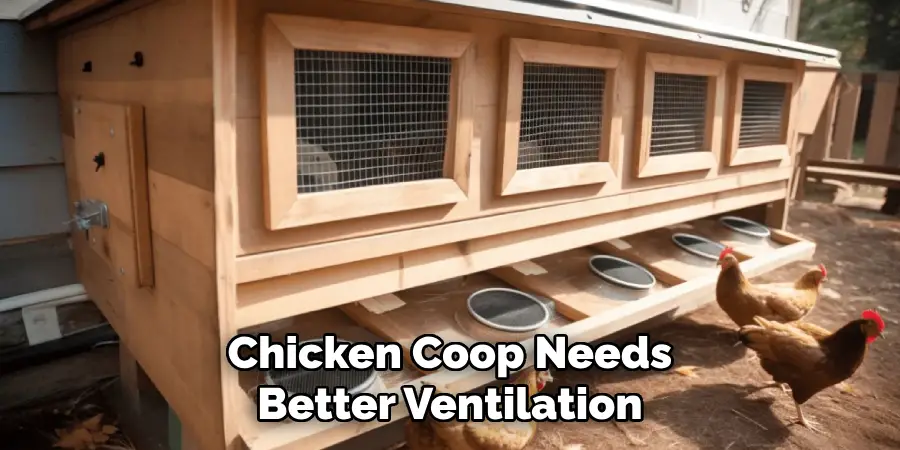
Additionally, if you notice a strong ammonia smell or excessive moisture in the coop, likely, that your ventilation system is not effectively removing these harmful elements. Another indicator is if you see mold or mildew growth in the coop, which can be a result of poor ventilation.
What are Some Common Types of Ventilation Systems for Chicken Coops?
Several different types of ventilation systems can be used in a chicken coop, including natural and mechanical options. Natural ventilation involves using windows, vents, or openings to allow fresh air to flow into the coop.
Mechanical ventilation, on the other hand, uses fans or exhaust systems to actively circulate and remove stale air from the coop. Some popular types of mechanical ventilation include continuous ridge vents, box vents, and gable-end vents.
How Can I Improve Ventilation in My Chicken Coop?
If you determine that your chicken coop needs better ventilation, there are several steps you can take to improve the airflow and overall environment for your chickens.
Some simple solutions include adding more windows or vents to allow for natural airflow, installing exhaust fans or solar-powered ventilators, and using bedding materials that promote ventilation, such as pine shavings. It’s also essential to regularly clean and maintain your coop to prevent the buildup of harmful gases and excess moisture.
Are There Any Dangers of Poor Ventilation in a Chicken Coop?
Yes, poor ventilation in a chicken coop can have significant consequences for the health and well-being of your chickens. As mentioned before, it can lead to respiratory issues, mold growth, and buildup of harmful gases like ammonia.
These issues can result in decreased egg production, stunted growth, and even death for your chickens. Therefore, it’s crucial to properly ventilate your chicken coop to ensure the health and happiness of your flock.
Are There Any Other Benefits of Good Ventilation in a Chicken Coop?
Aside from keeping your chickens healthy, good ventilation can also provide other benefits. It helps regulate temperature, allowing for cooler summers and warmer winters in the coop.
It also helps control humidity levels, which can prevent moisture-related issues like frostbite on your chickens’ combs and wattles. Proper ventilation can also reduce odors and improve air quality, making it a more pleasant environment for both you and your chickens.
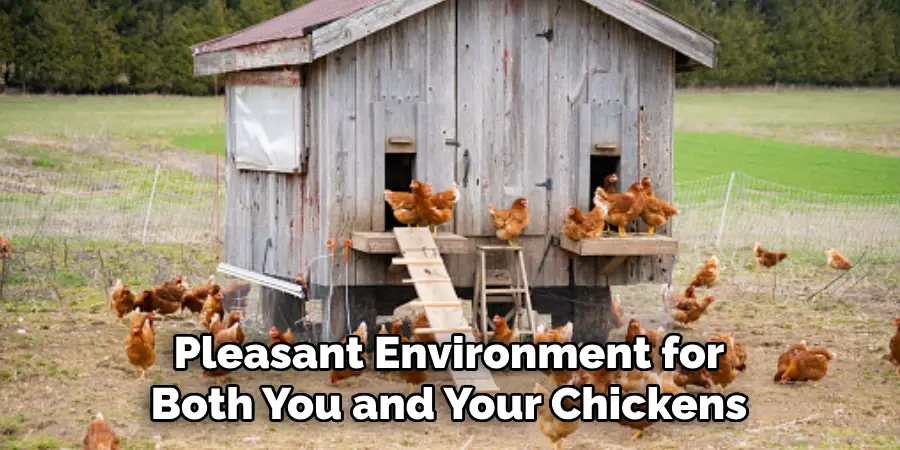
Conclusion
Knowing how to ventilate a chicken coop is an essential aspect of raising happy and healthy chickens. By paying attention to the signs of poor ventilation, understanding different types of ventilation systems, and taking steps to improve airflow in your coop, you can ensure that your chickens thrive in a well-ventilated environment.
Good ventilation not only benefits your flock’s health but also makes for a more comfortable and enjoyable experience for both you and your chickens. So, make sure to prioritize proper ventilation in your chicken coop for the best results!
About
Outdoor Fixes is a distinguished figure in the world of Diy design, with a decade of expertise creating innovative and sustainable Diy solutions.
His professional focus lies in merging traditional craftsmanship with modern manufacturing techniques,
fostering designs that are both practical and environmentally conscious. As the author of diy,
outdoorfixes delves into the art and science of outdoorfixes-making, inspiring artisans and industry professionals alike.
Education RMIT University
(Melbourne, Australia) Associate Degree in Design (Outdoor Fixes) Focus on sustainable design, industry-driven projects,
and practical craftsmanship. Gained hands-on experience with traditional and digital manufacturing tools, such as CAD and CNC software.
Nottingham Trent University
(United Kingdom) Bachelor’s in outdoorfixes.com and Product Design (Honors) Specialized in product design with a focus on blending creativity with production
techniques. Participated in industry projects, working with companies like John Lewis and Vitsoe to gain real-world insights.
Publications and Impact
In diy, Outdoor Fixes his insights on indoor design processes, materials, and strategies for efficient production.
His writing bridges the gap between artisan knowledge and modern industry needs, making it a must-read for both budding designers and seasoned professionals.

